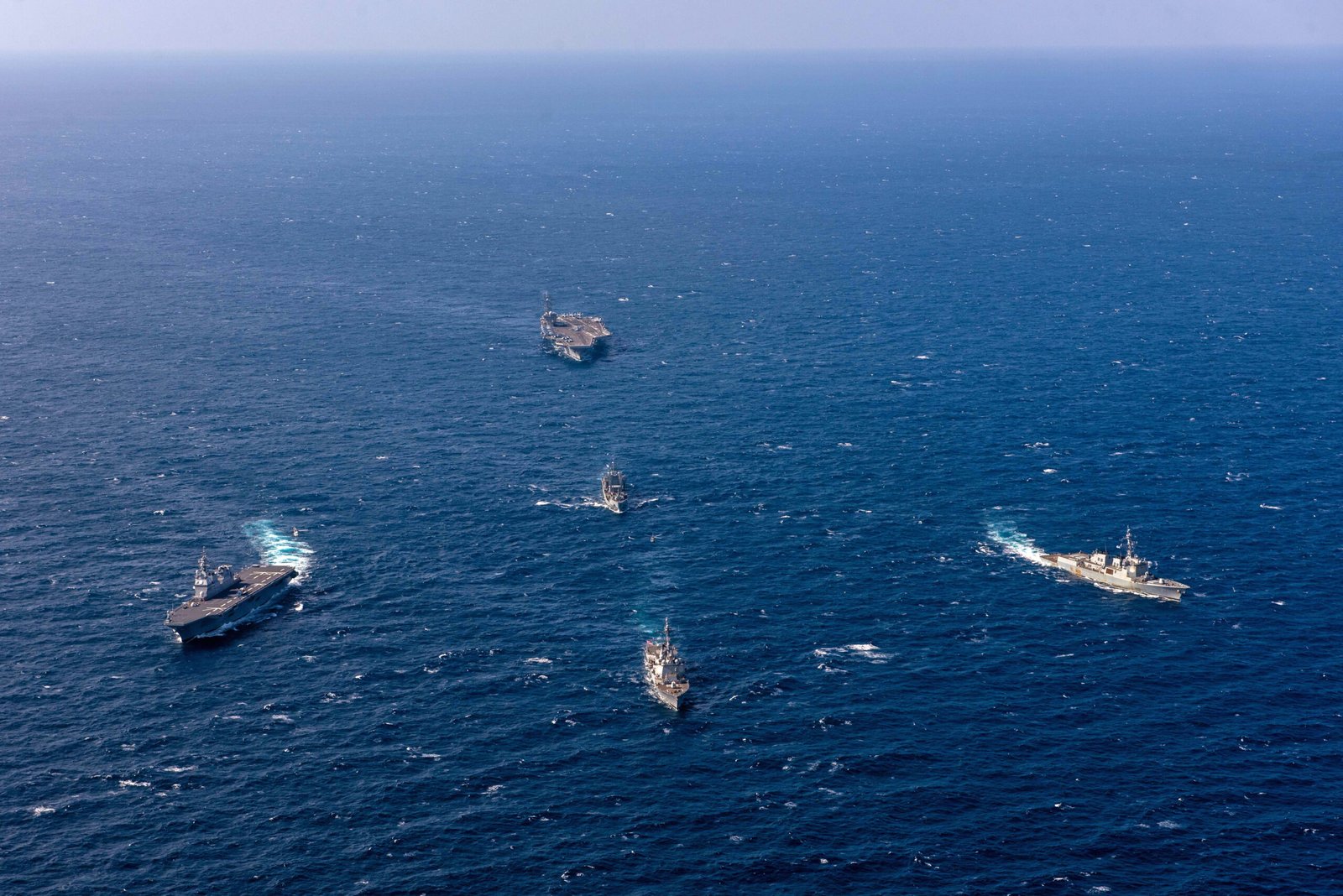From October 9 to 10, South Korea, the United States, and Japan conducted South Korea-U.S.-Japan training, including maritime interdiction training and anti-piracy training, in the high seas southeast of Jeju.
This training was held in conjunction with the agreements reached during the ROK-U.S.-Japan Defense Ministers’ meeting held last June to resume, regularize, and additionally identify trilateral exercises, and the security cooperation between ROK-U.S.-Japan to suppress and respond to North Korean nuclear and missile threats that are becoming more sophisticated at the Camp David Summit in August. This was done as a follow-up measure to what was agreed upon to be strengthened.
The training included the ROK Navy’s Aegis destroyer Yulgok Ii and the logistics support ship Cheonji, the aircraft carrier Ronald Reagan of the U.S. Navy’s 5th Carrier Strike Group, the cruisers Antietam and Robert Smalls, the Aegis destroyer Schupp, and the Japan Maritime Self-Defense Force’s Hyuga. etc. participated.
The training improves the deterrence and response capabilities of South Korea, the United States, and Japan against North Korea’s recently sophisticated nuclear and missile threats, responds to maritime security threats, and establishes a rules-based international order.
The focus was on improving trilateral maritime operational capabilities.
In particular, in terms of resuming the suspended ROK-US-Japan training, the trilateral maritime interdiction training between Korea, the US and Japan was resumed for the first time in 7 years since 2016, and the anti-piracy training was resumed for the first time in 6 years since 2017.
Colonel Jang Hoon, commander of the 72nd Squadron, the South Korean training commander, said, “This training was an opportunity to strengthen our ability to respond to North Korea’s maritime transportation of weapons of mass destruction and pirate activities that pose maritime security threats.” He added, “The Navy will continue to provide support to the Republic of Korea.” “We will further strengthen maritime security,” he said.
Meanwhile, on October 8, the maritime commanders of Korea, the US, and Japan held a meeting on the US aircraft carrier Ronald Reagan operating in the high seas southeast of Jeju.
The meeting was attended by Kim Myung-soo, Commander of Naval Operations Command, Karl Thomas, Commander of the U.S. 7th Fleet, and Saito Akira, Commander of the Japanese Self-Defense Fleet.
Maritime commanders discussed ways to strengthen maritime security cooperation along with trilateral response plans to North Korea’s evolving underwater threats and nuclear and missile threats.
In particular, as the operation of the real-time North Korean missile warning information sharing system agreed upon at Camp David by the leaders of Korea, the United States, and Japan within the year and the advance establishment of a multi-year trilateral training plan are making progress, maritime commanders are also discussing their opinions on follow-up measures. shared.
Commander of Naval Operations Command Kim Myeong-soo emphasized, “In order to respond to North Korea’s evolving underwater threats and nuclear and missile threats, a solid ROK-US alliance as well as trilateral security cooperation between Korea, the US and Japan are very important,” and “We will continue to conduct maritime-based trilateral exercises in the future.” “We will strengthen our efforts to strongly deter and respond to North Korea’s nuclear and missile threats,” he said.
Prior to this meeting, maritime commanders held a meeting of maritime commanders from Korea, the United States, and Japan on February 22 at the U.S. 7th Fleet Command located in Yokosuka, Japan.

